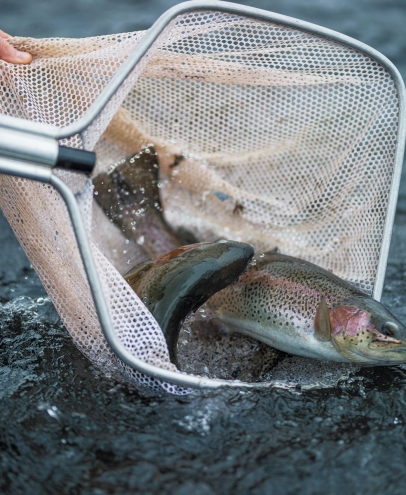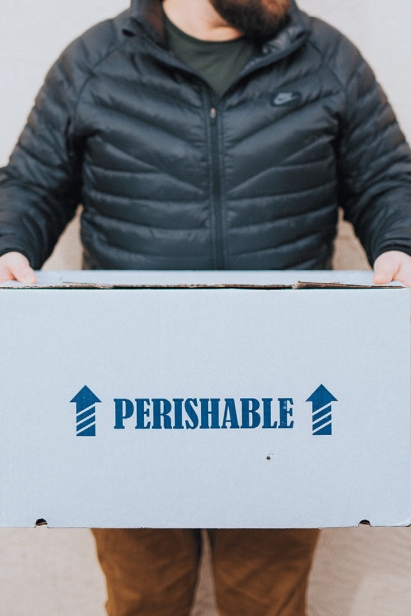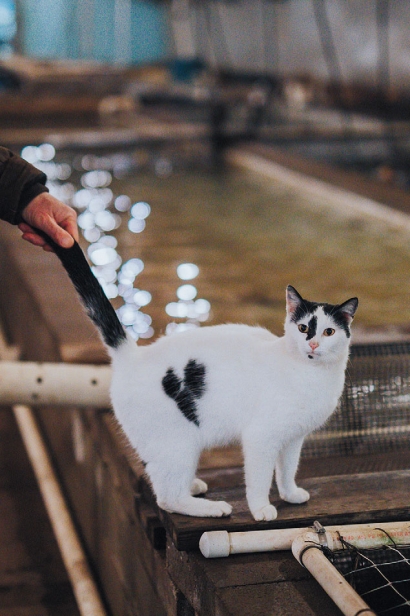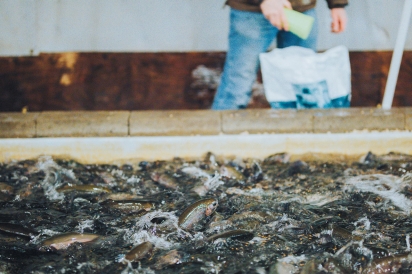Deep City Fishing: A Look at Fish Farms and Business in Central Ohio - Yep, Ohio
The ocean is like soil for seafood. Yet, just like our soils, the health of the ocean across the globe is changing, and with it, where our seafood will come from in the future.
In the United States, more than 90% of the seafood we eat is imported from other countries and oceans, with a significant portion of it having been fished by American fisherman, exported for processing and then “reimported” for consumption. Still, the global population of big-fish stocks has depleted by approximately 90% since the 1950s. For approximately 1 billion people, largely in developing countries, fish is their primary animal protein source, making the large percentage of imported fish in the United States even more problematic.
On top of that, a projected date of 2048 as the year there will be no wild-caught seafood left will cause more issues than a loss of menu options. The collapse of the ocean due to overfishing is expected to cause harmful algal blooms, coastal flooding and low-oxygen water, making sourcing seafood primarily from the oceans to meet the demands of the marketplace one of the most unsustainable and inefficient means of food production.
Central Ohio, however, has increasingly cast a net on farming fish—a practice known as aquaculture—and reining in the effects of overfishing the oceans, or at least the taste of days-old fish.
“See this filet? This fish was swimming this morning. When, virtually, the industry average for seafood—the stuff is about a week old.” That’s what Dr. Dave Smith, president of Freshwater Farms of Ohio, says he explains to his customers on a regular basis.
Freshwater Farms of Ohio, located on U.S. Highway 68 north of Urbana, is the state’s largest indoor fish hatchery. According to Dave, Central Ohio has seen a heavy influx of aquaculture operations in the past 10 years.
Dave and his wife bought the land and former poultry farm, where Freshwater Farms stands today, while he was a nutritional sciences graduate student at the University of Wisconsin-Madison. It’s been 30 years since the farm’s first fish crop, but this year, the farm has plans to return to its beginnings—providing for Columbus restaurants, as it did when it was first established in the late ‘80s. When Freshwater Farms served local restaurants, Rigsby’s Kitchen and Barcelona were among its customers, as well as grocery suppliers like Weiland’s Market. They delivered twice a week every week of the year to clients in Columbus and Dayton.
Preparing to return to its original niche, Freshwater Farms will have some competition in restaurant delivery. Local restaurants have also found a catch in distributor Coastal Local Seafood.
At Coastal Local’s helm and stern is the sole employee and owner, Ian Holmes, who doesn’t raise fish, but distributes seafood to Columbus restaurants. While Ian has large national competition, he typically delivers fresher seafood, and thus, has a proven conversion method.
“I rarely make cold calls anymore, but if I do, I just show up with a gallon of scallops,” Ian says.
Ian visits Boston about three to four times a year to maintain and find new business partners, but doesn’t limit himself to the East Coast. Ian visits Ohio fish farms and Lake Erie fisherman weekly to find product and build relationships.
Ian enjoys searching for just about any seafood out there. All he needs is the customer to say the species and he’s on it.
“I like to dabble. Get as much as I can for people. It’s kind of a challenge as well,” Ian says.
And one fish Ian has dabbled in is monkfish. “It’s so ugly people have stayed away from it. It is wild-caught and cooks like lobster and has been on the rise lately,” Ian says.
But, when customers are open to suggestions, Ian has his opinions. He is currently promoting lionfish from the Atlantic Ocean, to which it is not native. “It is a very invasive and harmful fish that we should be responsibly fishing for and eating,” Ian says.
And since it is all about eating, Ian serves 25 restaurants a week. But next on his agenda is setting up a Community Supported Agriculture (CSA) program due to high demand.
“Branching out into retail with the CSA will be fun because I get emails on a regular basis saying, ‘Can you provide seafood for a home chef?’ And, it would be hard for me to take on one at a time, but to do the CSA would get me a bunch of customers at once.”
Central Ohio’s fisheries, however, aren’t staying clear of playing “home chefs” themselves.
Freshwater Farms offers prepared foods such as smoked trout, smoked trout spread and smoked trout mousse, a garlic-based spread. “These are really things that are very popular in the holiday season, but also all year round, for parties and hors d’oeuvres,” Dave says.
Apart from Freshwater Farms and Coastal Local, there are more fish in the sea when it comes to Central Ohio aquaculture.
Kingdom Fish, located in Rushylvania, Ohio, was founded in 2007 and raises tilapia. Unlike Dave, raising fish began as a pastime for husband and wife Don and Lisa Jones.
“We started out just as a hobby, sharing with friends and family and that’s how it began. It wasn’t something that we had any prior experience in at all. In fact, we never had had an aquarium. I knew nothing about how to raise fish, but it was just something that we wanted to try,” Don says.
With only two options of sinking or swimming in their difficult hobby, the Joneses swam a little too well and family and friends urged them to get serious about raising fish.
Despite never having had an aquarium, the Joneses now have nursery tanks filled with filtered water and lots of baby tilapia, also known as fry, that they get from Louisiana. While maintaining the tanks’ water temperature and quality, the most important nursery tank procedure is feeding time. Fed six to seven times a day in this case, size matters.
“After six weeks we grade the fish out according to size, and then we put them in different tanks so they don’t all grow at the same rate. Some are going to be a bit larger than others, so it’s so important for us to maintain equal size when they go out into the grow-out tanks because we don’t use any chemicals at all, growth hormones, growth accelerators or anything like that,” Don says. “And, if there are different sizes in the same tank, the big ones will try to bully the small ones and they’ll get the food and the little guys don’t grow quite as well.”
Once graded, the fish are put in grow-out tanks where they’ll live until harvest. With 10 1,700-gallon grow-out tanks, and four more in the pipeline, Kingdom Fish will be able to support approximately 4,200 fish in the grow-out tanks, with approximately 300 fish in each one.
There, the fish will stay for 10 to 12 months, when they will then be harvested.
After perfecting the farming process for each batch of fish, Kingdom Fish sells at Worthington Farmers Market, Logan County Farmers Market, Hilliard Farmers Market and Dublin Farmers Market, confirming that Central Ohio is a place for deep-city fishing—with good catch at markets and restaurants alike.
Coastal Local Seafood 614-302-1652
Freshwater Farms of Ohio
2624 N. U.S. Hwy. 68, Urbana, Ohio 43078 • 937-652-3701
Kingdom Fish
6746 County Rd. 112, Rushylvania, Ohio 43347 • 937-539-2529










